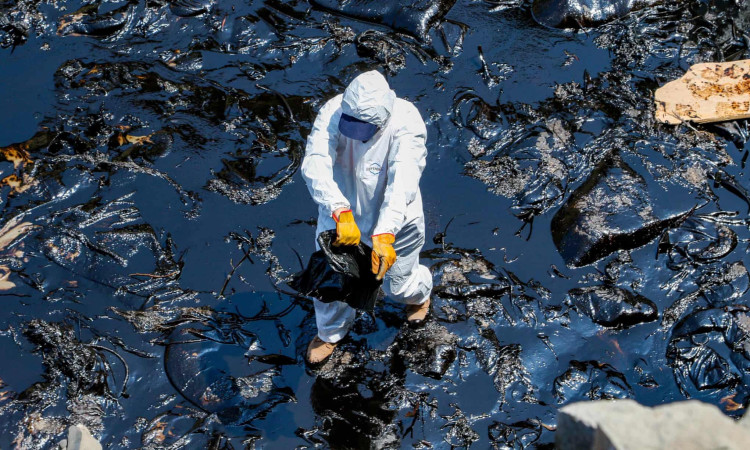The International Atomic Energy Agency (IAEA) will send experts and sophisticated monitoring equipment to help Peru assess and limit the environmental damage from a major oil spill in its coastal waters, Director General Rafael Mariano Grossi told the Foreign Minister of the South American nation today.
In a video meeting with Foreign Minister Óscar Maúrtua de Romaña following Peru’s request for urgent assistance, Director General Grossi said nuclear techniques can be used to collect the precise scientific data the authorities need in order to deal effectively with the impact of the oil leak and overcome the environmental crisis.
“The IAEA will take immediate action to assist Peru in addressing this serious situation which is threatening the country’s precious coastal environment as well as its fisheries-dependent economy,” he said. “In the next few days, we will dispatch a fact-finding expert mission as the first step to support the country’s efforts to clean up the oil spill and reduce the negative consequences as much as possible.”
Based on the mission findings, the IAEA will be able to provide targeted nuclear-related technology for the development of a comprehensive long-term monitoring programme in the affected area’s coastal waters, sediments, biota and air. The IAEA can also deliver specialised equipment, technical advice and training for the establishment of a dedicated laboratory facility for oil spill monitoring and toxicity assessment.
“The deployment of world class experts and powerful monitoring equipment can make a very real difference in Peru’s fight against this environmental emergency,” Director General Grossi said.
The IAEA’s assistance mission will be done in coordination with relevant U.N. organizations with a mandate in the area of marine pollution such as the United Nations Environment Programme (UNEP) and the International Maritime Organization (IMO).
The IAEA provides expertise on a range of nuclear and isotopic techniques to gain a better understanding of ocean contaminants such as oil and paraffin. This helps countries to identify the source of spills and better plan remediation activities, and to determine where the responsibility for them lies.
The oil spill in Peru’s waters, reportedly caused by large waves near a refinery triggered by a volcanic eruption in Tonga, has affected large areas both at sea and on land, according to the country’s Environment Ministry.
The planned IAEA assistance draws on the scientific know-how of its Environment Laboratories in Monaco. These unique laboratories within the United Nations system investigate the effects of pollution on marine ecosystems.
The IAEA provided similar assistance to Sri Lanka after a container ship burned and sank off the coast of Colombo in May 2021, leading to a toxic chemical leak, and to Mauritius after large amounts of fuel oil leaked into the Indian Ocean surrounding the island nation from a ship that ran aground off its coast in July 2020.
The IAEA, which joined the Bonn Agreement Oil Spill Identification Network of Experts (OSINet) in 2014, has worked for years on monitoring petroleum hydrocarbon and its derivatives in the oceans. It has developed methods based on stable carbon isotope and chemical signature analyses, which enable investigators to trace the origin of contaminants.


